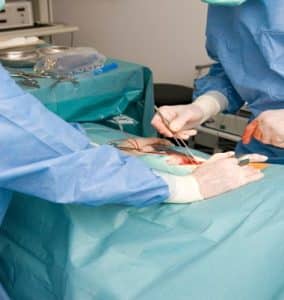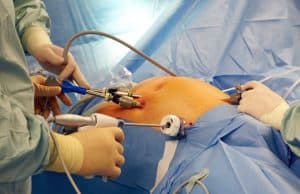Background
Hernia reduction involves pushing protruding tissue back into normal position during treatment.
Hernia happens when organ or tissue pushes through weak muscle and connective spot
Hernia repair is a common surgery type. It frequently occurs in abdomen, groin, and near incisions.
Hernias are divided into two main groups as:
Groin hernias
Abdominal hernias
These are further sub-divided as:
Inguinal Hernia: In the groin area
Femoral Hernia: Located just below the inguinal ligament
Umbilical Hernia: It involves part of the intestine
Spigelian hernia: Located at the lateral edge of the rectus abdominis
Manual reduction of a hernia before surgery relieves symptoms and prevent complications. Patient should relax their abdominal muscles, while physician applies pressure to encourage tissue/organ to return properly.
This process may relieve symptoms temporarily but is not a permanent solution.
Indications
Reducible Hernia:
A hernia that is soft and can be pushed back into the abdomen without surgical intervention.
Incarcerated Hernia:
If the hernia remains incarcerated or if manual reduction is not possible then surgery is indicated to prevent complications.
Strangulated Hernia:
When a hernia becomes strangulated i.e., the blood supply to the herniated tissue is cut off completely. This can lead to tissue necrosis.
Post-Injury or Sudden Onset Hernias:
Hernias that occur suddenly after trauma or heavy lifting may require immediate reduction to prevent further damage.
Contraindications
Absolute Contraindication for Manual Reduction:
Strangulation Occurs When the Blood Supply is Cut Off
Risk of Compromising Blood Flow
Signs of Peritonitis or Systemic Infection
Peritonitis
High Risk of Bowel Perforation
Severe Pain with Attempted Reduction
Long-Standing, Irreducible Hernia
Fibrosis or Adhesions
Large Hernias with Suspected Organ Entrapment
Patient Unstable for Surgery
Outcomes
Manual reduction for reducible hernias provides temporary relief from discomfort and bulging.
Manual reduction of hernia does not fix the root cause. Surgery is needed to prevent recurrent hernias.
Nonoperative approach adequate for asymptomatic patients with reducible hernias. Prospective trial shows good outcomes for minimally symptomatic.
An irreducible hernia presents normal skin, non-tense contents, and possible audible bowel sounds.
Obstructed hernias present with more tension and visible bowel shadows on diagnostic imaging compared to non-obstructed hernias.
Equipment required
Cold compress
Scalpel & Forceps
Needle Holders
Surgical Sutures
Anesthesia Equipment
Wound Closure and Dressing
Laparoscopic Instruments
Laparoscope
Trocar and Cannulas
Laparoscopic Suturing Devices
Patient Preparation
For hernia present in the intestine, bowel preparation may be required to reduce the risk of infection during surgery.
Patients are instructed to fast for 6 to 8 hours prior to surgery.
Informed Consent
Patients should understand procedure, benefits, risks, and alternatives for consent.
Patient Positioning
Place the patient in a Trendelenburg position. (i.e., head down & legs up)
In cases of an inguinal hernia, the patient should be in a supine position.
For Manual Hernia Reduction
Step 1: Relax abdominal muscles:
Motivate patients to relax their abdominal wall with gentle pressure and ask them to breathe deep.
Step 2: Application of Gentle Pressure
Slow and steadily apply pressure with your fingers or the palm of hand over the herniated bulge. This should gently guide the contents back through the defect in the abdominal wall.
For Surgical Hernia Reduction
A. Open Hernia Repair:
Step 1: Anesthesia
General/local anesthesia is administered.
Step 2: Incision
Surgeons will make incisions directly at the site of the hernia.
Step 3: Reduction of Hernia
The surgeon carefully identifies the herniated tissue and gently reduces it back into the abdominal cavity.
Step 4: Hernia Repair
For small hernia cases, the defect may be closed with sutures alone by stitching the edges of the healthy tissue together.
For larger hernia cases, a synthetic mesh is placed over or under the defect to reinforce the weakened area.
Step 5: Closure
The surgical wound is closed in layers. The deeper muscle and fascia are sutured first.

Fig 1. Open Hernia Repair
B. Laparoscopic Hernia Repair:
Step 1: Anesthesia
General anesthesia is administered.
Step 2: Incision and Access
Small incisions are made in the abdominal wall to insert the laparoscope.
The abdomen is inflated with CO2 gas to create space for visualization and manipulation of the herniated tissue.
Step 3: Reduction of Hernia
The herniated contents are observed with the laparoscope and then surgeon gently manipulates the herniated tissue back into the abdominal cavity.
Step 4: Placement of mesh
Synthetic mesh is placed over the hernia and fixed in place with sutures.
Step 5: Closure
The small incisions are closed with sutures.

Fig 2. Laparoscopic Hernia Repair
Complications:
Complications of Manual Hernia Reduction are:
Incomplete Reduction
Injury to Herniated Contents
Missed Strangulation
Hematoma or Seroma Formation
Complications of Surgical Hernia Reduction are:
Infection
Bleeding or Hematoma
Seroma
Hernia Recurrence
Bowel Injury or Perforation
Bowel Obstruction
Ischemia or Necrosis of Herniated Tissue
References
References

Hernia reduction involves pushing protruding tissue back into normal position during treatment.
Hernia happens when organ or tissue pushes through weak muscle and connective spot
Hernia repair is a common surgery type. It frequently occurs in abdomen, groin, and near incisions.
Hernias are divided into two main groups as:
Groin hernias
Abdominal hernias
These are further sub-divided as:
Inguinal Hernia: In the groin area
Femoral Hernia: Located just below the inguinal ligament
Umbilical Hernia: It involves part of the intestine
Spigelian hernia: Located at the lateral edge of the rectus abdominis
Manual reduction of a hernia before surgery relieves symptoms and prevent complications. Patient should relax their abdominal muscles, while physician applies pressure to encourage tissue/organ to return properly.
This process may relieve symptoms temporarily but is not a permanent solution.
Reducible Hernia:
A hernia that is soft and can be pushed back into the abdomen without surgical intervention.
Incarcerated Hernia:
If the hernia remains incarcerated or if manual reduction is not possible then surgery is indicated to prevent complications.
Strangulated Hernia:
When a hernia becomes strangulated i.e., the blood supply to the herniated tissue is cut off completely. This can lead to tissue necrosis.
Post-Injury or Sudden Onset Hernias:
Hernias that occur suddenly after trauma or heavy lifting may require immediate reduction to prevent further damage.
Absolute Contraindication for Manual Reduction:
Strangulation Occurs When the Blood Supply is Cut Off
Risk of Compromising Blood Flow
Signs of Peritonitis or Systemic Infection
Peritonitis
High Risk of Bowel Perforation
Severe Pain with Attempted Reduction
Long-Standing, Irreducible Hernia
Fibrosis or Adhesions
Large Hernias with Suspected Organ Entrapment
Patient Unstable for Surgery
Manual reduction for reducible hernias provides temporary relief from discomfort and bulging.
Manual reduction of hernia does not fix the root cause. Surgery is needed to prevent recurrent hernias.
Nonoperative approach adequate for asymptomatic patients with reducible hernias. Prospective trial shows good outcomes for minimally symptomatic.
An irreducible hernia presents normal skin, non-tense contents, and possible audible bowel sounds.
Obstructed hernias present with more tension and visible bowel shadows on diagnostic imaging compared to non-obstructed hernias.
Cold compress
Scalpel & Forceps
Needle Holders
Surgical Sutures
Anesthesia Equipment
Wound Closure and Dressing
Laparoscopic Instruments
Laparoscope
Trocar and Cannulas
Laparoscopic Suturing Devices
For hernia present in the intestine, bowel preparation may be required to reduce the risk of infection during surgery.
Patients are instructed to fast for 6 to 8 hours prior to surgery.
Patients should understand procedure, benefits, risks, and alternatives for consent.
Place the patient in a Trendelenburg position. (i.e., head down & legs up)
In cases of an inguinal hernia, the patient should be in a supine position.
Step 1: Relax abdominal muscles:
Motivate patients to relax their abdominal wall with gentle pressure and ask them to breathe deep.
Step 2: Application of Gentle Pressure
Slow and steadily apply pressure with your fingers or the palm of hand over the herniated bulge. This should gently guide the contents back through the defect in the abdominal wall.
A. Open Hernia Repair:
Step 1: Anesthesia
General/local anesthesia is administered.
Step 2: Incision
Surgeons will make incisions directly at the site of the hernia.
Step 3: Reduction of Hernia
The surgeon carefully identifies the herniated tissue and gently reduces it back into the abdominal cavity.
Step 4: Hernia Repair
For small hernia cases, the defect may be closed with sutures alone by stitching the edges of the healthy tissue together.
For larger hernia cases, a synthetic mesh is placed over or under the defect to reinforce the weakened area.
Step 5: Closure
The surgical wound is closed in layers. The deeper muscle and fascia are sutured first.

Fig 1. Open Hernia Repair
B. Laparoscopic Hernia Repair:
Step 1: Anesthesia
General anesthesia is administered.
Step 2: Incision and Access
Small incisions are made in the abdominal wall to insert the laparoscope.
The abdomen is inflated with CO2 gas to create space for visualization and manipulation of the herniated tissue.
Step 3: Reduction of Hernia
The herniated contents are observed with the laparoscope and then surgeon gently manipulates the herniated tissue back into the abdominal cavity.
Step 4: Placement of mesh
Synthetic mesh is placed over the hernia and fixed in place with sutures.
Step 5: Closure
The small incisions are closed with sutures.

Fig 2. Laparoscopic Hernia Repair
Complications:
Complications of Manual Hernia Reduction are:
Incomplete Reduction
Injury to Herniated Contents
Missed Strangulation
Hematoma or Seroma Formation
Complications of Surgical Hernia Reduction are:
Infection
Bleeding or Hematoma
Seroma
Hernia Recurrence
Bowel Injury or Perforation
Bowel Obstruction
Ischemia or Necrosis of Herniated Tissue

Both our subscription plans include Free CME/CPD AMA PRA Category 1 credits.

On course completion, you will receive a full-sized presentation quality digital certificate.
A dynamic medical simulation platform designed to train healthcare professionals and students to effectively run code situations through an immersive hands-on experience in a live, interactive 3D environment.

When you have your licenses, certificates and CMEs in one place, it's easier to track your career growth. You can easily share these with hospitals as well, using your medtigo app.



